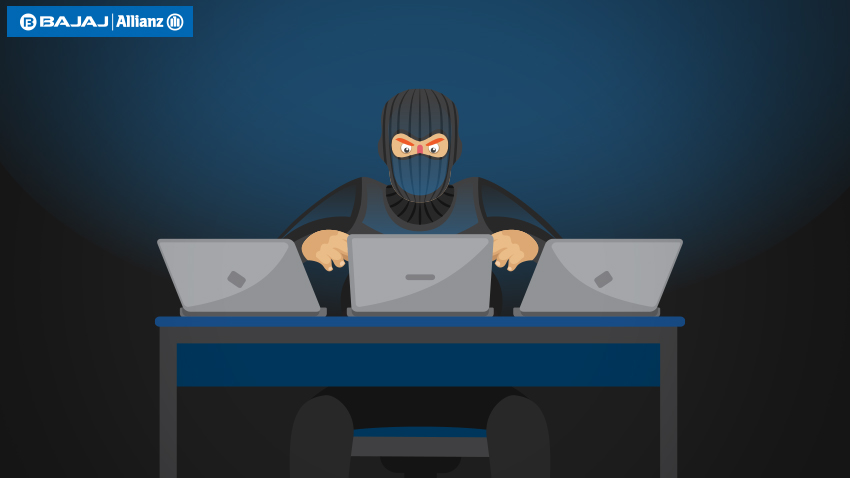Interpol is often considered the penultimate authority on global crime data reporting. The authority, in the early months of 2020, communicated these data-points based on the research they conducted with their third-party vendors:
- 900,000+ Spam messages.
- 700+ incidents of Malware.
- 45,000+ malicious links.
All these attacks were conducted on a normal and observable set of businesses, websites, and individual URLs monitored by Interpol in just four months. As businesses were pushed to rush into remote working, most enterprises did not get the chance to invest in and optimize their cybersecurity infrastructure. The trend of more aggressive cyberattacks further exacerbated the impact of the situation – creating a perfect storm.
Cyber security insurance is a clever way to protect the firm's interests. It provides coverage and remuneration to cover security upgrade expenses, damages paid to customers, legal expenses, PR expenses, and a whole range of costs. But before an enterprise decides to have a cybersecurity insurance policy, it should explore the gamut of cyberattacks.
What are the 4 Common Types of Cyber Attacks?
Understanding what are the 4 common types of cyberattacks can help a business choose more cost-effective cybersecurity insurance plans. With an informed perspective on the range of possible and prevalent cyberattacks, decision-makers can balance their investing in upgraded security measures and buying insurance for the same.
Here are the most common types of cyberattacks:
1. Malware
Malware is a term coined to communicate malicious software, spyware, Ransomware, and other forms of applications designed to fulfil a criminal exercise. The attackers generally try to find the most susceptible points in a network and target them with full force. Their goal is to gain access to the system without alerting the firewalls installed for detecting such activities.
Once an attacker has entered a system, she/he can easily copy all the sensitive data, edit the data to render it inaccurate, or even block access to certain functionalities of a system. As known in the case with
SolarWinds, it is possible for attackers to silently stay in the systems and get access to all the confidential data for several months at a stretch before any malicious activity is detected.
2. Man-in-the-Middle Attacks
The simplest way to understand MITM attacks is imagining a courier-boy bringing some critical documents mailed by your bank. Most of the communication between you and your bank is supposed to be confidential. On his way, the courier-boy decides to open your envelope, record any sensitive information there is, and then seals the envelope before delivering it to you. When the same courier boy is taking your response to the bank, he can change any information he wants and use it to get access to your accounts. That is an analogy representing an MITM attack.
Banks do not rely on couriers for sending sensitive information, so this scenario will not unfold with your courier boy duping you. However, a sophisticated attacker can intercept the connection between you and an application or a website and then decrypt the information. This will give her/him access to all the information that can be used for stealing passwords, credit or debit card data, login credentials, and other sensitive data.
3. SQL Injections
Most web applications and websites use SQL querying with MySQL, Oracle, and other database management platforms. An attacker using SQL Injection as a method will try to infiltrate these databases and bypass the primary security arrangements the firm has invested in. Once the attacker has access to the database, she/he can edit the information, and the website will keep making requests with inaccurate data. The attackers can also use this information to circumvent interfaces and directly contact customers or blatantly use a firm's intellectual property.
4. Ransomware
One cannot answer the question ‘what are the 4 common types of cyber attacks’ without talking about Ransomware. Not long ago, Ransomware was yet another variant of Malware. In 2020, as enterprise teams got disrupted with geographic distance between them and the systems became more vulnerable, several folds' quantum of Ransomware incidents grew. Private equity firms, cloud service providers, municipal systems, universities & colleges - a large set of organizations and businesses faced Ransomware.
A Ransomware attack typically unfolds this way:
- An attacker takes control of your systems, database, or applications.
- She/he then asks for a certain amount of money to be transferred to an offshore account, or else sensitive data will be erased, leaked, or edited.
- Once the money is transferred as a 'ransom,' the attacker may let go of the systems.
FAQs
- Whom Should You Contact When You Witness a Cyberattack?
You should immediately inform your technology specialists, vendors working with your systems, partners, suppliers, and customers dependent on your systems, local law enforcement authorities, legal team, and cybersecurity insurance provider.
- Are All Cyberattacks Covered Under a Cyber Security Insurance Plan?
Generally – Yes. Talk to your insurance provider before you buy a plan to get comprehensive data on
cyber insurance coverage.
 Service Chat:
Service Chat: 

